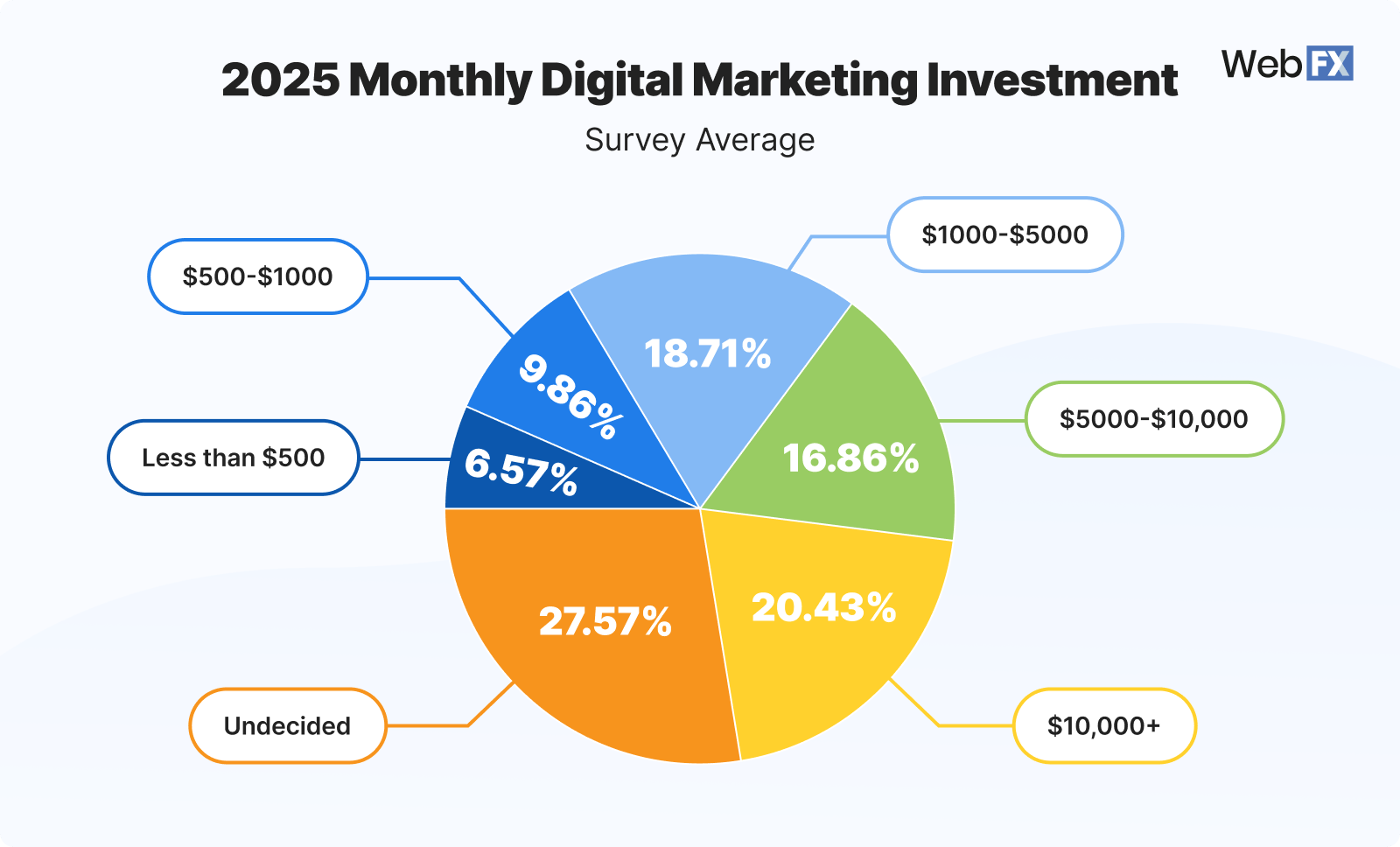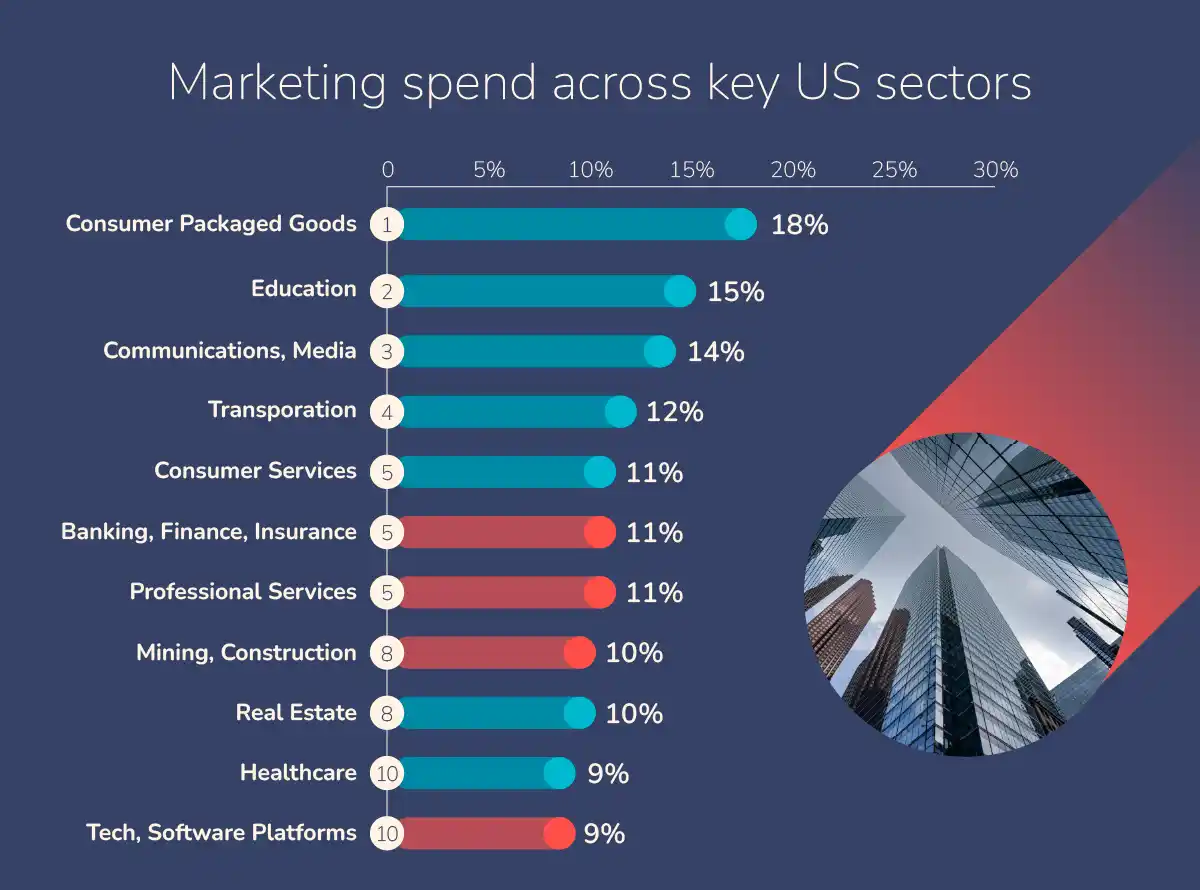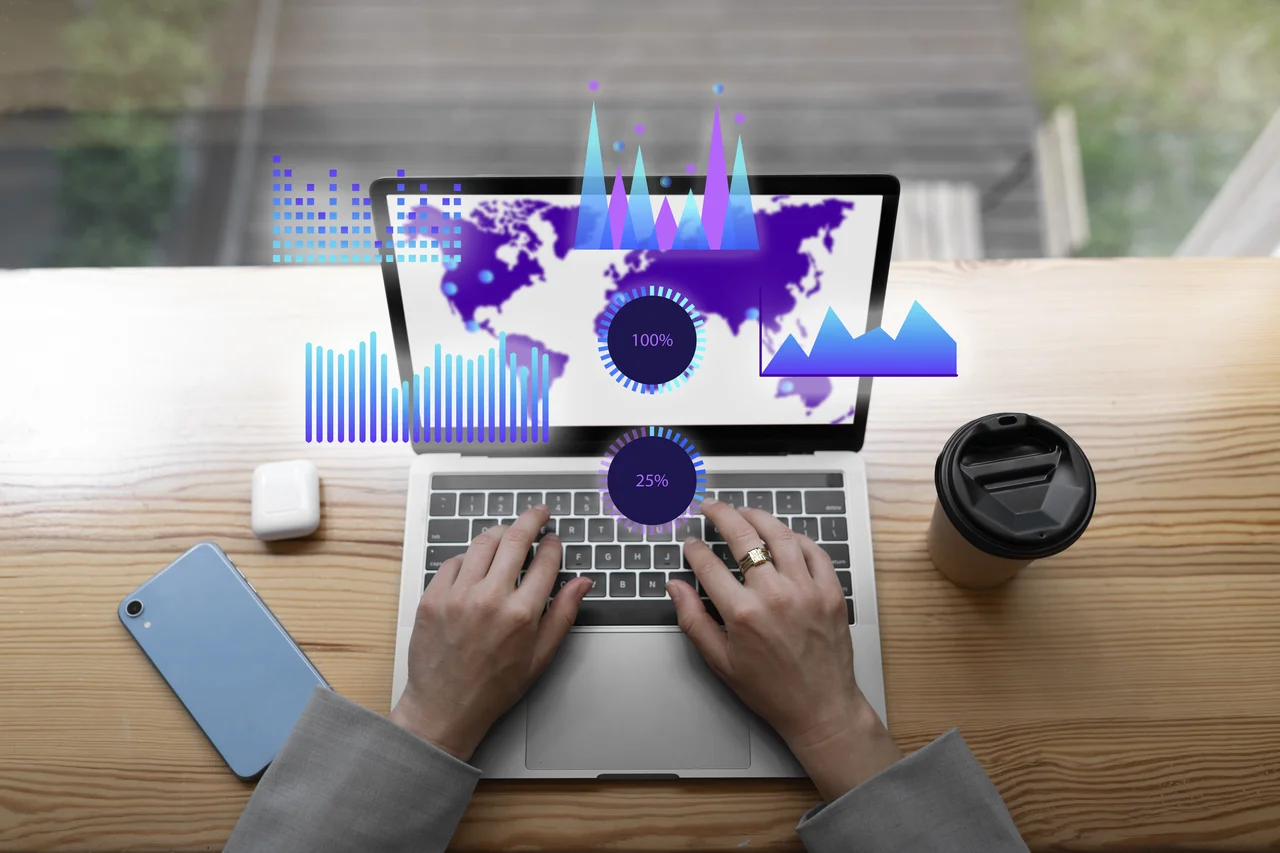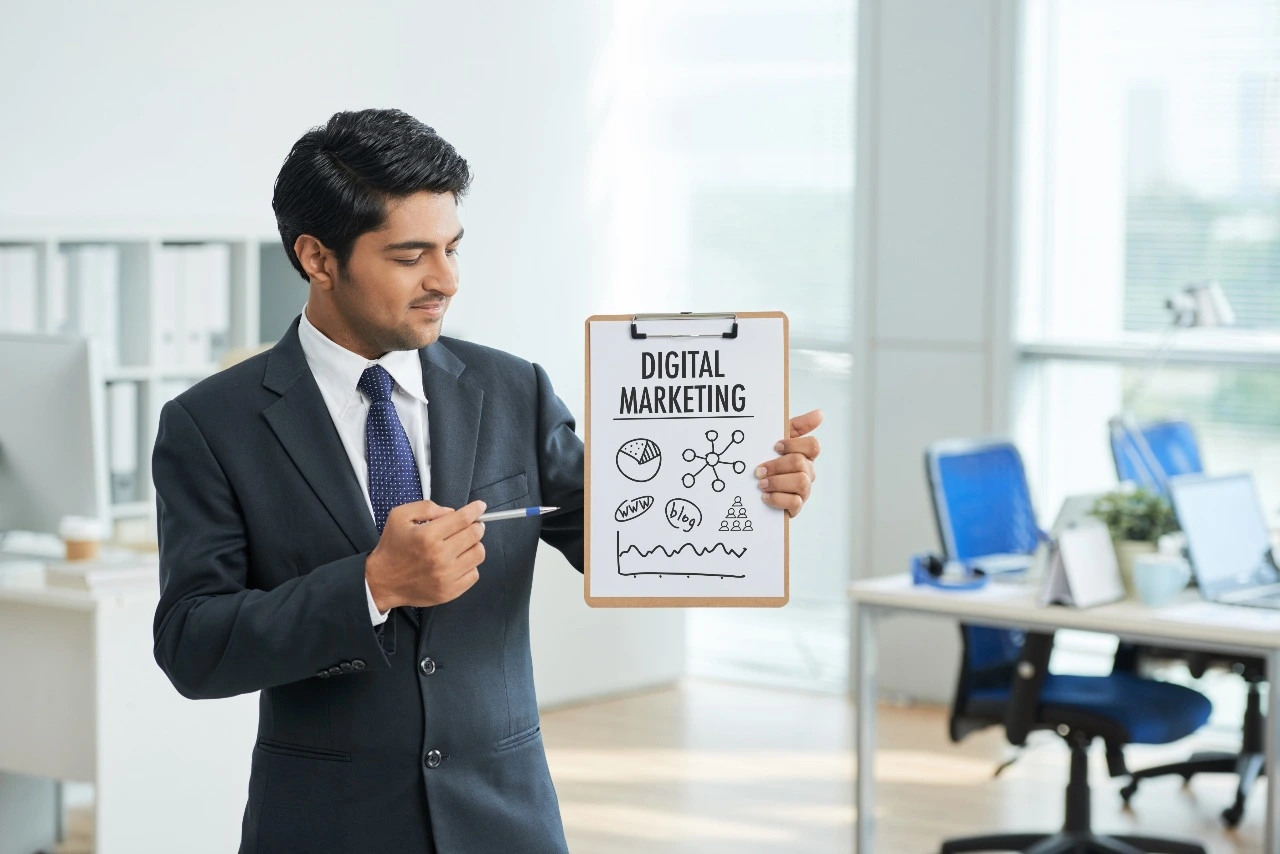Listen to article
As marketers gear up for 2025, understanding where to strategically allocate resources has never been more critical. The marketing landscape is in constant evolution, influenced by emerging technologies, shifting consumer behaviors, and increasing demands for measurable ROI. For B2B marketers especially, staying ahead of the curve means being informed about the latest marketing budget trends and adapting strategies accordingly.
But with so many channels, tools and platforms vying for attention (and budget), how do you ensure your investments are driving meaningful results? How do you navigate the complexities of AI, data privacy, content creation, and customer experience to maximize your marketing impact?
Let’s dive into the key trends shaping marketing budgets in 2025 and uncover actionable insights to guide your strategic decision-making.
How AI and Automation Are Transforming Marketing Success
In a fast-paced world where delivering results quickly and effectively matters more than ever, AI and automation have become the backbone of advanced marketing strategies. Far from being just another buzzword, these technologies are reshaping how marketers approach their goals—making campaigns more data-driven, personalized, and efficient. With AI’s ability to analyze massive datasets in seconds and automation’s knack for streamlining repetitive tasks, marketers are now able to shift their focus to crafting impactful, high-value customer experiences.
- Currently, 64% of marketers are utilizing AI in their content creation processes. Source
- By 2028, the market value of AI in marketing is projected to exceed $107.5 billion. Source
- Marketers are actively embracing AI to enhance productivity (76%) and improve customer engagement (52%). Source
- Half of B2B marketing leaders are currently using AI, with 75% likely to adopt generative AI for business promotion as AI-driven advertising grows. Source
- 57% of B2B companies are using generative AI to accelerate content production, freeing up time for high-value activities; additionally, 41% are using it for more creative campaigns, and 35% to gain a competitive edge. Source
Key Takeaway
Marketers are no longer asking if AI should be implemented but rather how to leverage it to its fullest potential. Whether it’s accelerating content creation, enabling predictive analytics, or crafting hyper-personalized customer journeys, AI isn’t just an advantage—it’s the new standard. As the competitive landscape becomes more challenging, those who embrace AI and automation today will position themselves as tomorrow’s leaders.
Pro Tip:
Don’t wait for AI mastery—start small and scale up. Introduce AI tools to improve specific processes, such as content ideation or campaign targeting, and gradually expand their role in your strategy. Tools like Jasper, ChatGPT, or HubSpot AI are great starting points for both beginner and advanced marketers.
AI’s Growing Role in Marketing: Voice Tech, Chatbots, and Smarter Ad Strategies
The marketing landscape is rapidly being reshaped by AI’s capabilities, with voice technology, chatbots, and AI-enhanced advertising platforms at the forefront of innovation. These tools are no longer simply add-ons but critical components of customer engagement and campaign optimization. As marketing budgets evolve to accommodate these advancements, businesses that identify and prioritize the most impactful AI-driven channels will gain a competitive edge in 2025 and beyond.
- Voice technology is projected to grow into a $45 billion market by 2028. Source
- Consumers are embracing voice shopping, which already accounts for over $3.3 billion in consumer spending. Source
- 51% of voice shoppers use the technology to research products, highlighting its role in the buyer journey. Source
- The global chatbot market, valued at $5.4 billion in 2023, is on track to reach $15.5 billion by 2028. Source
- 62% of marketers increased their PPC budgets last year, underscoring the ongoing importance of paid search. Source
- Microsoft Advertising’s advanced AI features are expected to attract more advertisers seeking untapped audiences in 2025. Source
- Traditionally favored by B2B marketers, Microsoft Advertising is seeing increased interest from B2C brands, thanks to its partnership with OpenAI. Source
- AI tools continue to transform content creation and streamline workflows, delivering both efficiency and scalability. Source
- AI-powered chatbots enable round-the-clock customer support with human-like interactions. Source
- Generative AI chatbots are evolving to handle complex queries and natural language more effectively, paving the way for deeper customer engagement. Source
Key Takeaway
AI is no longer a futuristic concept; for marketers, it is the key to unlocking new levels of personalization, efficiency, and customer connection. From voice technology’s potential to revolutionize search behavior to chatbots’ ability to deliver scalable yet personalized service, the opportunities are vast. With platforms like Microsoft Advertising leaning heavily on AI to deliver smarter targeting and campaign management, marketers should view AI not just as an enhancement but as a foundational component of their strategy moving forward. Success will hinge on experimenting with these tools to understand their unique capabilities and tailoring them to fit your audience’s needs.
Pro Tip:
Begin identifying AI entry points in your marketing strategy today. Optimize your website for voice search to capture emerging consumer behavior, and consider deploying a chatbot to handle FAQs or customer inquiries. For paid efforts, frequently review AI-powered platforms like Microsoft Advertising to capitalize on their latest innovations, and embrace content automation tools to save time without sacrificing quality. By consistently evaluating performance and trends, you’ll be well-positioned to stay ahead of your competition.
Data-Driven Accountability in Marketing Budgets

Source: WebFX
As marketing budgets come under tighter scrutiny, the ability to connect investments to measurable results has become a non-negotiable skill for marketers. In an era where every dollar spent must be justified, data quality, governance, and advanced analytics are the cornerstones of modern marketing success. With evolving consumer expectations, stricter privacy regulations, and the rapid integration of AI tools, marketers face an unprecedented opportunity to transform data into actionable insights and business growth.
- A HubSpot survey reveals that 60% of marketers feel their budgets and ROI are being monitored more closely now than ever. Source
- Over one-third of marketing leaders cite conversion rates as their most important Key Performance Indicator (KPI), signaling an emphasis on tangible results. Source
- Alarmingly, 44% of businesses lack a clear, quantitative understanding of their marketing impact, highlighting a critical need for better metrics and transparency. Source
- A staggering 87% of marketers believe data is their organization’s most underutilized asset, reflecting a widespread need to optimize data strategies. Source
- By 2025, B2B marketers will need to elevate their data management practices as they navigate privacy concerns, stricter regulations, and the rising capabilities of generative AI. Source
- Robust data analysis is key to professional growth and justifying budget expansions, with 26% of marketers confirming that high-quality data leads to improved ROI. Source
Key Takeaway
The statistics underscore an undeniable truth: the future of marketing lies in mastering and leveraging data. To remain competitive, marketers must shift from intuition-driven decisions to data-backed strategies that deliver measurable ROI. But data alone isn’t the answer—marketers must build systems to analyze and act on insights, ensuring every campaign delivers value. Tighter budget monitoring and evolving privacy standards mean there’s no room for guesswork in today’s marketing landscape. Elevating your data strategy now will ensure you’re prepared to thrive in a competitive, accountability-driven future.
In addition to data mastery, businesses can further benefit from adopting broader tactics that enhance their marketing efforts. For instance, leveraging a strong B2B website strategy can help companies optimize their online presence, ensuring their websites are not only visually appealing but also conversion-focused. Aligning your website’s performance with your data insights can create a seamless path to achieving your marketing goals.
Pro Tip:
Don’t just collect data—make it work for you. Leverage tools like Google Analytics, Tableau, or HubSpot to create dynamic dashboards that visualize performance in real-time. Regularly audit your metrics to ensure they align with your business goals and optimize campaigns to improve ROI where it matters most.
ROI with Strategic Budget Allocation in Digital Advertising
As businesses head into 2025, marketers are sharpening their focus on channels that deliver measurable results. In an era where marketing budgets must work harder than ever, leveraging data to guide investment decisions is key. From email marketing to social media and PPC, the goal is clear: prioritize the platforms that drive the highest ROI while staying agile enough to adapt to emerging trends.
- Email marketing remains a standout performer, consistently delivering one of the highest returns on investment, followed closely by SEO, mobile marketing, and content marketing. Source
- Paid advertising channels like Facebook and Google Ads continue to lead the pack in ROI generation. Source
- Alarmingly, 47% of marketers are still not tracking the ROI of their content marketing strategies, leaving significant insights untapped. Source
- Approximately 40% of B2B marketers plan to increase their investment in paid search advertising, highlighting the ongoing importance of search visibility. Source
- Social media marketing strategies are gaining momentum, with 56% of B2B marketers planning to allocate more resources to these platforms. Source
- Email marketing budgets are also on the rise, with 40% of B2B marketers intending to increase their spend in this high-ROI channel. Source
Key Takeaway
The data paints a compelling picture: digital advertising remains a cornerstone for businesses looking to scale their marketing efforts. However, it’s not just about pouring money into high-performing channels—it’s about understanding the nuances of what drives ROI and ensuring every dollar is strategically allocated. For instance, combining the long-term benefits of SEO with the immediacy of paid ads or the personalization power of email marketing can create a balanced, results-driven strategy.
Pro Tip:
Don’t just track ROI—analyze it. Use insights from platforms like Google Analytics, HubSpot, or Tableau to dig deeper into why certain channels perform better. Look for patterns in audience behavior, test new ad formats, and refine your messaging to achieve continuous optimization across all campaigns. This data-driven approach will ensure your marketing budget delivers maximum impact while remaining adaptable to shifting market demands.
Content Marketing Evolution: The Rise of Video, Podcasts, and Audience-Centric Strategies
The foundation of successful B2B marketing is shifting in exciting ways, with investments pouring into multimedia content and audience-first approaches. Today, marketers are no longer just publishing for the sake of producing content—they’re focusing on formats that captivate, educate, and convert. Video, thought leadership, and audio content like podcasts are shaping the new age of content marketing, where engagement and quality trump quantity.
- 45% of B2B marketers expect to increase their content marketing budgets in 2024, with a focus on video (69%) and thought leadership initiatives (53%). Source
- Globally, 69% of marketers planned to allocate resources specifically toward video content in 2024, while 47% emphasized in-person event investments alongside 21% for digital events. Source
- The content marketing landscape is set to hit $107 billion in revenue by 2026, a significant leap from $82.3 billion in 2024. Source
- 83% of marketers now prioritize content quality over quantity, even if it means scaling back on how often they publish. Source
- Companies spending under $15,000 per month on content are 74% more likely to report underperforming campaigns compared to those with larger budgets. Source
- Videos have become the most impactful content type, preferred by 58% of B2B marketers, surpassing case studies (53%) and e-books/white papers (45%). Source
- Blogs featuring embedded video content earn three times more inbound links than text-only posts. Source
- U.S. podcast ad spending is set to exceed $2.5 billion in 2024, driven by podcasting’s surging popularity. Source
- Short-form video, fueled by platforms like TikTok, Instagram Reels, and YouTube Shorts, continues to be a top strategy for engaging younger audiences. Source
- Online videos are projected to make up more than 82% of all consumer internet traffic. Source
Key Takeaway
The data paints a clear picture: the future of content marketing lies in formats that combine value and creativity to forge deeper connections with audiences. The dominance of video and the rising influence of podcasts highlight the need to align investments with evolving consumer preferences for interactive, easily digestible content. For marketers, this means dedicating budget not just to content creation but also to crafting experiences that resonate on a human level—whether through storytelling in video, building trust with thought leadership, or reaching niche audiences through targeted podcast collaborations.
Pro Tip:
Diversify your content strategy by exploring both short-form and long-form formats. Use short-form videos to quickly grab attention and communicate simple ideas, while in-depth formats like webinars, podcasts, or white papers allow you to build thought leadership. To stay on top of trends, test new tools or platforms and analyze what format drives the highest engagement or conversion from your audience. Cross-promoting video and audio content across channels not only builds visibility but also maximizes ROI on your content investments.
Prioritizing Trust, Experience, and Long-Term Brand Equity
In an increasingly competitive B2B landscape, marketers are moving beyond short-term wins to prioritize investments that deliver sustained growth and loyalty. Central to these efforts are brand building, enhancing the customer experience, and fostering trust—cornerstones of developing relationships that drive long-term business value. With buyers seeking more authenticity and proof of impact, strategies like impactful storytelling, consistent brand messaging, and leveraging peer-driven validation are becoming non-negotiable tools for success.
- 67% of B2B marketers are allocating larger budgets to brand building, underscoring the critical role of a strong and consistent brand identity in cultivating trust and competitive differentiation. Source
- 64% of marketers are increasing their focus on customer experience, highlighting the importance of creating seamless, enjoyable interactions that leave a lasting impression. Source
- 33% of buyers rely on peer reviews, case studies, and testimonials to inform their purchasing decisions, proving that trust-driven content is invaluable in the decision-making process. Source
Key Takeaway
B2B marketers are shifting the narrative from “selling” to “building relationships.” Buyers are no longer just evaluating products; they’re evaluating the brands behind them. By investing in brand growth, delivering exceptional customer experiences, and showcasing credible proof points like testimonials and case studies, businesses are not only meeting today’s customer expectations but also planting seeds for future loyalty. This strategic shift ensures brands don’t just capture attention—they earn trust and drive advocacy.
Pro Tip:
Effective trust-building starts with authenticity. Go beyond polished marketing materials; let current customers tell your story through authentic testimonials and results-driven case studies. Pair these with proactive customer service and a unified brand voice across touchpoints to establish a deeper connection with your audience that resonates long after the purchase.
Navigating Omnichannel Strategies and Evolving B2B Buyer Expectations in a Mobile-Driven Era
The digital landscape is continuously reshaping how businesses interact with customers, and the expectation for seamless, mobile-first experiences has become the new baseline. For B2B marketers, the challenge extends beyond mere optimization—buyers now demand not only convenience but also highly personalized, ROI-driven content that supports increasingly complex decision-making processes. Meeting these expectations isn’t just critical—it’s a significant opportunity to stand out in a crowded marketplace.
- Only 27% of senior marketers feel their omnichannel strategies are well-aligned, leaving room for innovation and competitive differentiation. Source
- 75% of consumers are inclined to spend more with companies that prioritize excellent customer experiences. Source
- Over 50% of consumers are likely to switch to a competitor after just one negative experience, and they expect personalized interactions. Source
- A recent Gartner study found that 65% of B2B buyers rely on YouTube when researching purchasing decisions. Source
- B2B buyers also value third-party interactions 1.4 times more than direct engagement with suppliers’ digital channels. Source
- Mobile devices are responsible for approximately 50.5% of global website traffic, underscoring the importance of mobile-first optimization. Source
- The B2B buying process continues to grow more intricate, with 26% of buyers involving more stakeholders, 44% conducting deeper ROI analyses, and 34% spending more time researching decisions. Source, Source
- Budget constraints remain a significant concern, with 34% of buyers reporting purchase delays due to freezes and 25% operating with reduced budgets compared to the previous year. Source, Source
Key Takeaway
Today’s buyer journey isn’t just about being present across multiple channels—it’s about ensuring each touchpoint feels like part of a cohesive, personalized experience. For B2B marketers, this means addressing the dual challenge of delivering seamless mobile-first interactions while meeting the growing demand for detailed ROI insights and peer-validated endorsements. Marketers who integrate these capabilities and adapt to shifting decision-making dynamics will position themselves as indispensable partners in their buyers’ success.
Pro Tip:
To better navigate the complexities of modern buyer behavior, consider mapping out the specific needs of each stage in the customer journey. Focus on creating content and touchpoints that address these needs, from mobile-optimized landing pages to third-party reviews and ROI calculators. Use data-driven tools to continuously refine your approach and ensure your strategy evolves alongside buyer expectations.
Purpose-Driven Marketing: Why Values Will Shape Budgets in 2025

Source: Sopro
As global awareness around sustainability and social responsibility continues to grow, consumers are paying closer attention to the ethical stances of the brands they engage with. In 2025, marketing strategies grounded in purpose will no longer be an option but a necessity for businesses striving to maintain relevance and loyalty. Purpose-driven marketing isn’t just about stating values—it’s about embedding them into your budget priorities and actions in a way that authentically aligns with consumer expectations.
- Consumers increasingly expect businesses to take a stand on social, environmental,and ethical issues. Source
- Purpose-driven marketing, where brands focus on the values they share with their audience, will be paramount in 2025 as consumers become more conscientious about the brands they support. Source
Key Takeaway
The shift toward purpose is more than just a trend—it’s a reflection of consumers’ desire for meaningful engagement with brands that actively champion causes they care about. To stay ahead in 2025, businesses must go beyond surface-level messaging and integrate purpose into every touchpoint, from product development to community initiatives. By doing so, brands can cultivate authentic loyalty, stand out in competitive markets, and create an impact that resonates.
Pro Tip:
Don’t stop at identifying shared values—show proof of your commitment. Highlight specific initiatives or measurable results in your marketing campaigns to demonstrate your impact. Transparency builds trust, and a trusted brand stands the test of time. Additionally, businesses looking to amplify their marketing efforts in a cost-effective manner might consider full-service marketing solutions. These comprehensive services can help integrate purpose-driven strategies seamlessly into every campaign, ensuring consistency and effectiveness across all channels.
Return of In-Person Events: A Game-Changer for Connection
In a digitally saturated world, in-person events are reclaiming their place as a cornerstone of effective marketing. These face-to-face experiences offer something digital formats simply can’t replicate: authentic human connection, sensory engagement, and the chance to create lasting memories. For brands, this comeback signals an unparalleled opportunity to foster loyalty, elevate brand storytelling, and provide meaningful value to their audience. Let’s take a closer look at what the numbers reveal about this growing trend:
- 59% of meeting professionals now prefer organizing in-person-only events, while only 21% still favor virtual formats. Source
- The meetings and events industry is expected to boom in 2025, with 66% of professionals anticipating budget increases to meet diverse business objectives. Source
- A whopping 80% of industry leaders project growth in event spending, with 30% predicting budgets will climb by more than 25%. Source
Key Takeaway
The renewed focus on live events highlights the power of real-world interactions to build trust and break through screen fatigue. While virtual and hybrid models still hold their place, the evident shift toward face-to-face gatherings demonstrates that people crave shared, tangible experiences. Companies that embrace this resurgence aren’t just investing in events—they’re investing in a deeper connection with their audience.
Pro Tip:
To maximize ROI on in-person events, design experiences that go beyond the ordinary. Think interactive product demos, personalized touches, and exclusive perks that attendees can’t get online. This not only reinforces your brand’s value but also creates moments that attendees will talk about long after the event is over.
Conclusion
As we look ahead to 2025, it’s clear that marketing budgets are being shaped by a desire for innovation, measurable impact, and meaningful connections with audiences. From AI-driven technologies revolutionizing customer engagement to the resurgence of in-person events, the landscape is evolving with opportunities for marketers to rethink their strategies and adopt a more data-driven, customer-centric approach. The rise of video content, voice technology, and purpose-driven marketing underscores the importance of staying agile in order to meet shifting consumer and B2B buyer expectations.
Now more than ever, success hinges on aligning marketing investments with high-ROI channels, such as email marketing, SEO, and video, while embracing tools that offer personalization and automation. Brands that prioritize trust, deliver exceptional omnichannel experiences, and align with consumer values will not only stand out but thrive in an increasingly competitive market.
Are you ready to adapt to these trends and optimize your marketing strategy? Ready to boost your traffic and grow your website? Your customers are looking for you, and our SEO services can help you be found across search engines. Let’s shape the future of your marketing together.
About Where Marketing Budgets Are Headed: 2025 Edition
This guide was written by the Scopic Studios team and reviewed by Araksya Hakobjanyan, SEO Lead at Scopic Studios.
Scopic Studios delivers exceptional and engaging content rooted in our expertise across marketing and creative services. Our team of talented writers and digital experts excel in transforming intricate concepts into captivating narratives tailored for diverse industries. We’re passionate about crafting content that not only resonates but also drives value across all digital platforms.
Note: This blog’s feature image is sourced from Freepik.































































































































































































































